Xing CHEN: Chemical Approaches for Deciphering Glycosylation
Pei WANG 2020-10-16
On October 15th, 2020, professor Xing CHEN from College of Chemistry and Molecular Engineering, Peking University was invited to the 36th Science Lecture of College of Science. He gave a talk on the “Chemical Approaches for Deciphering Glycosylation”, which was chaired by prof. Zhiping ZHENG, head of Dept. of Chemistry.
Guest Introduction
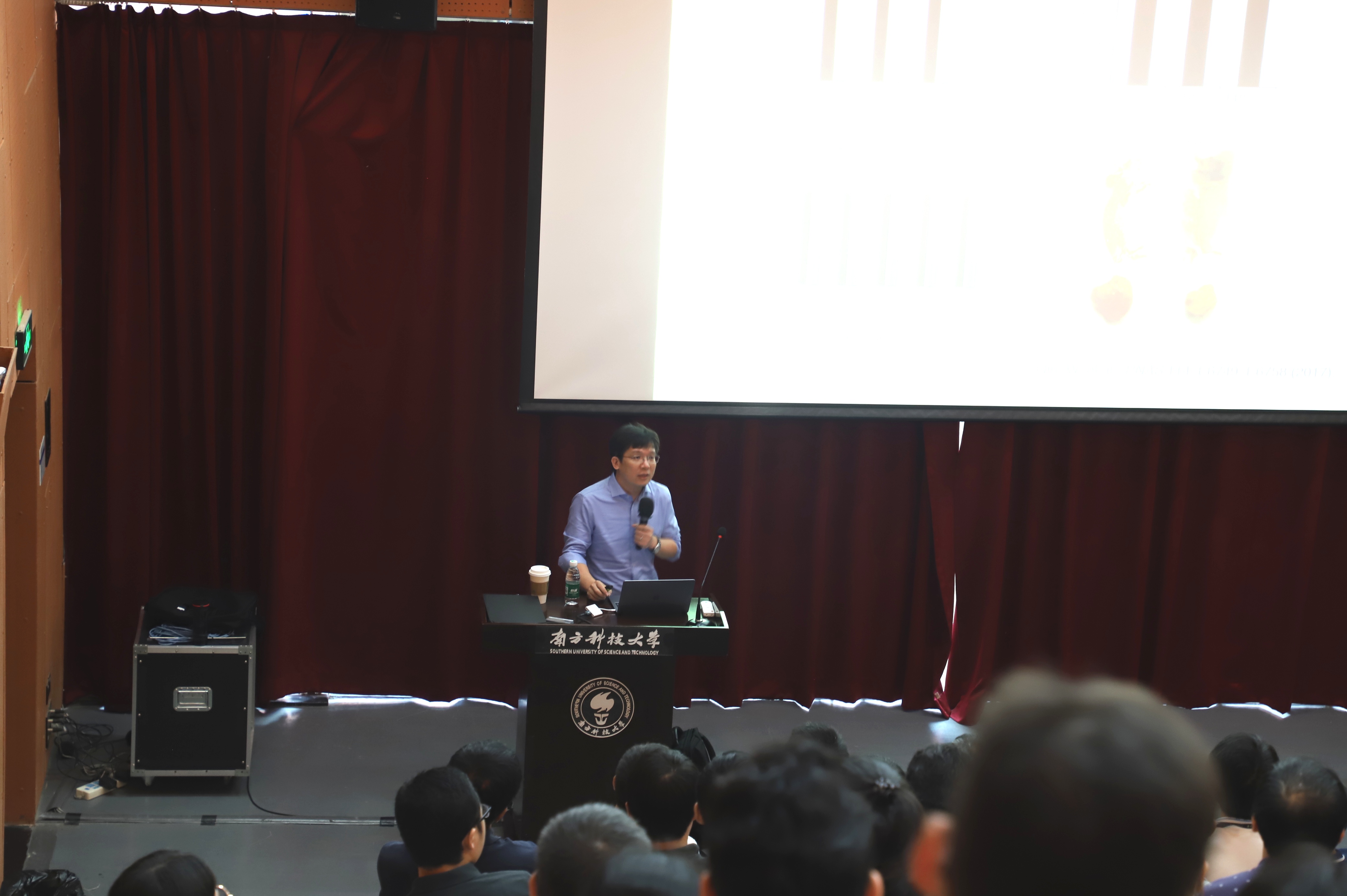
Prof. Xing CHEN
Dr. Xing CHEN is currently professor and Dean of College of Chemistry and Molecular Engineering at Peking University. He completed his bachelor’s degree in chemistry from Tsinghua University in 2002, and obtained his Ph.D in chemistry from University of California, Berkeley in 2007. Under the guidance of Prof. Carolyn Bertozzi and Prof. Alex Zetti, he then joined the laboratory of Prof. Timothy Springer at Harvard Medical School as a LSRF postdoctoral fellow, where his research focused on structural biology and immunology. In September 2010, Dr. CHEN started as an assistant professor in College of Chemistry at Peking University. He was promoted directly to Full Professor with tenure in 2016. He is also affiliated with Center for Life Science (CLS) and Synthetic and Functional Biomolecule Center (SFBC). Some of his recent awards include Okeanos-CAPA Senior Investigator Award at the Chemical and Biology Interface (2019), CCS-RSC Young Chemist Award (2018), ACS David Y. Gin New Investigator Award (2016), IGO Young Glycoscientist Award(2015), and National Science Fund for Distinguished Young Scholars (2014). His current research interest focuses on chemical glycobiology.
Lecture Review
Sugar plays an important role in human body. In vertebrates, in addition to being an energy substance, more than half of the proteins are glycosylated. Glycans in cells provide a wealth of life information, such as signal transduction, mediating embryonic development and so on. Therefore, the development of tools that can analyze the structure and dynamic changes of glycans is of great value, and chemical biology provides an important means for the development of such tools. During the talk, prof. CHEN introduced the progress of his research group in the field of glycobiology in recent years, especially the use of chemical tools to clarify the biological functions of glycosylation, as well as its labeling and visualization in vivo.
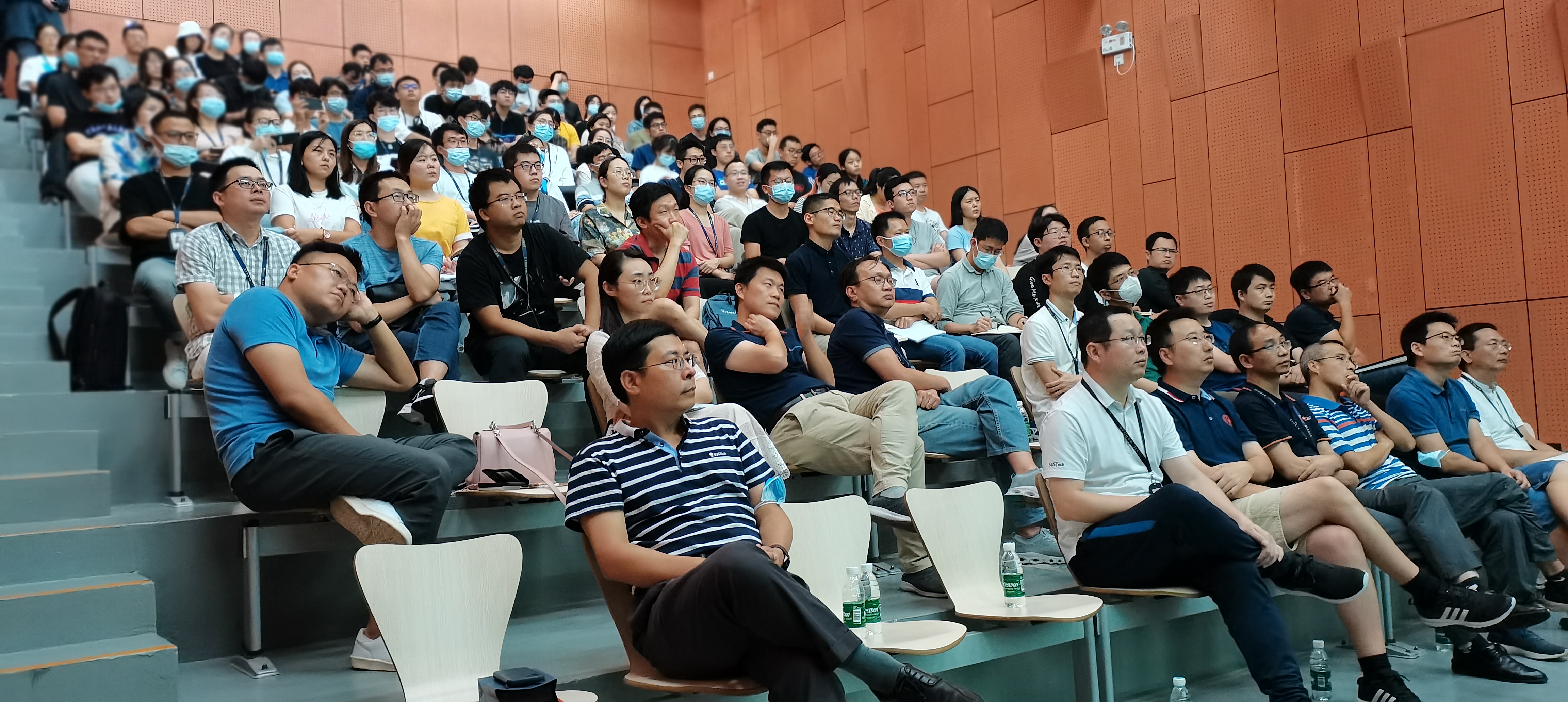
Faculty and students are listening to the lecture
First, through glycan metabolizing labeling strategies, they succeeded in labeling glycans in different tissues. By incorporating chemically labeled monosaccharides (such as azide or alkynyl-labeled sialic acid) into glycans through natural metabolic pathways, and through a "click reaction" (such as the reaction of azide and alkyne), fluorescence imaging or enrichment of glycans can be achieved. Currently, with the help of the metabolic pathway of sialic acid, they have successfully applied this method to the imaging of glycans in the heart, tumors and brain, and realized the visualization of glycan molecules in living systems.
To further understand the structure of glycan molecules, the resolution of imaging needs to be improved. In order to break through the limitation of optical diffraction limit, Professor CHEN's group integrated the Expansion Microscopy (ExM) technology to develop a systematic ultra-high-resolution imaging method for glycan molecules. The method uses metabolic labeling of biomolecules (such as azide and alkynyl), and use "click reaction" to link biomolecules with streptavidin, and then achieves the amplification of imaging signals through isotropic swelling. This strategy has a wide range of application and can successfully expand the detection range of expansion microscope from proteins and nucleic acids to sugars, lipids and even small molecules, and the reagents are also quite available.
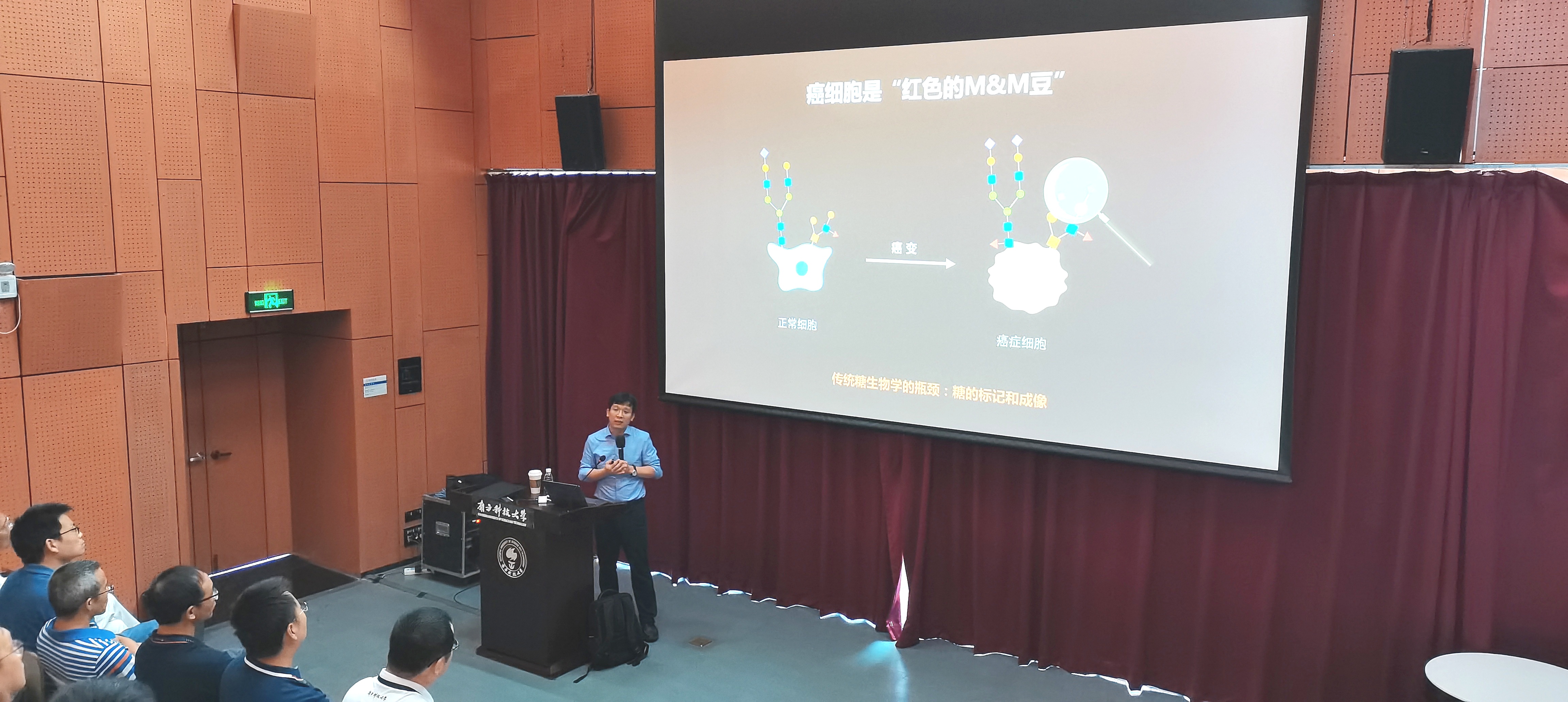
Prof. Xing CHEN is delivering the lecture
Using this strategy, Professor CHEN’ s research group has successfully labeled O-GlcNAc modified nucleoporins, sialic acid on the surface of HeLa cells and nerve synapses, as well as biomolecules such as phospholipid bilayers in membrane subcellular structures, including endoplasmic reticulum, mitochondria and Golgi. It has great potential in high-resolution imaging of biological tissues.
During the talk, Professor CHEN also introduced a new method for synthesizing glycoproteins, which is to use pathogen effector protein glycosyltransferases to modify proteins in eukaryotic cells. Considering the low substrate specificity of the Legionella SetA effector protein, they realized the unnatural glycosylation modification of the target protein substrate, and then with "click chemistry", the glycosylation of the target protein can be fluorescently labeled or enriched.
The chemical tools and strategies developed by Prof. CHEN's research group in recent years have provided powerful methods for the dynamic labeling and visualization of glycosylation, the research of glycosylation on protein properties and functions.
Interaction
In the second section, the audience had an in-depth exchange with Prof. CHEN on cross-diciplinary research, the identification of glycosylation sites, the difference between glycosylation and glycation, the glycosylation transfer, the improvement and specificity of enzymes, etc.
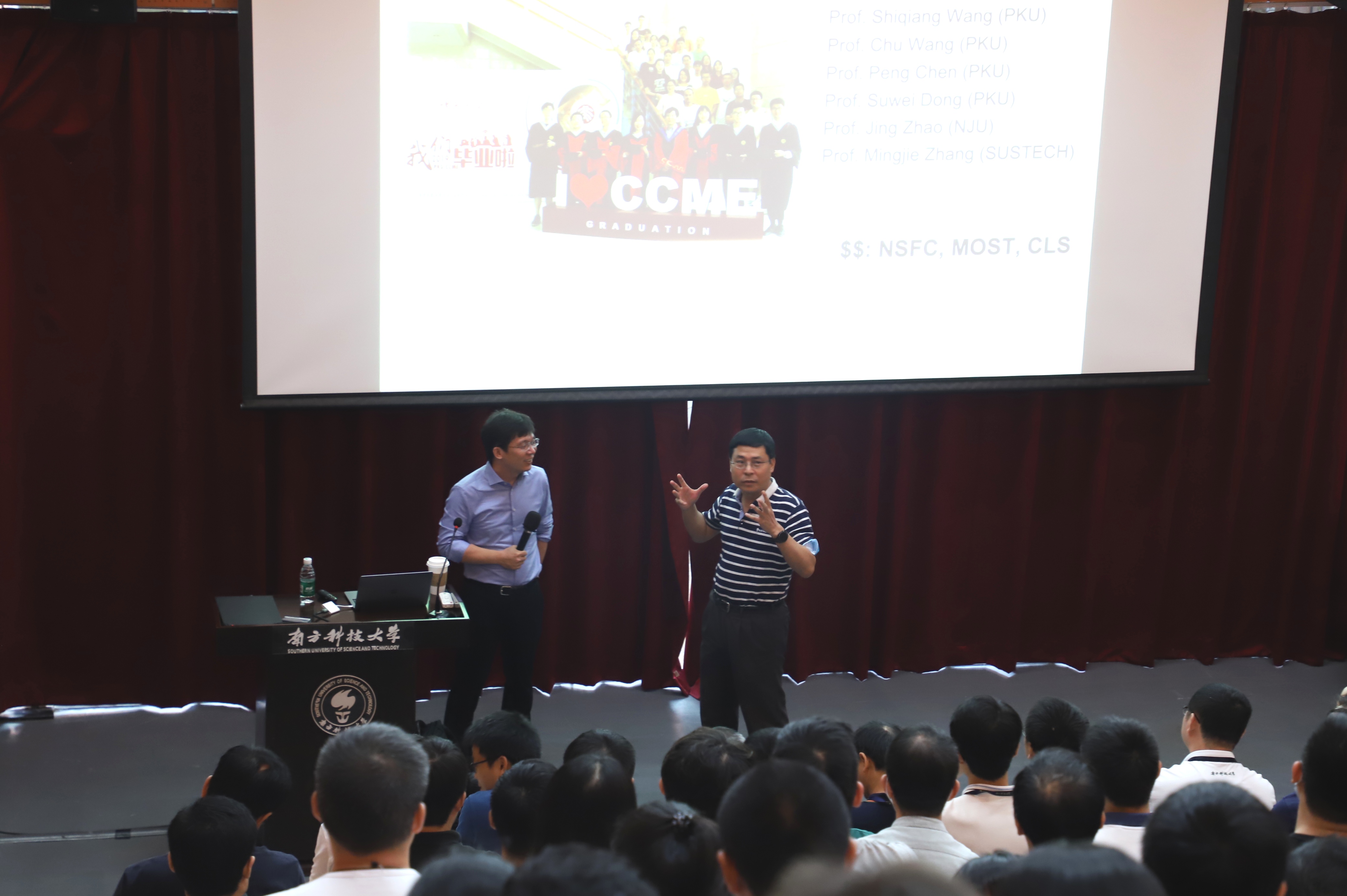
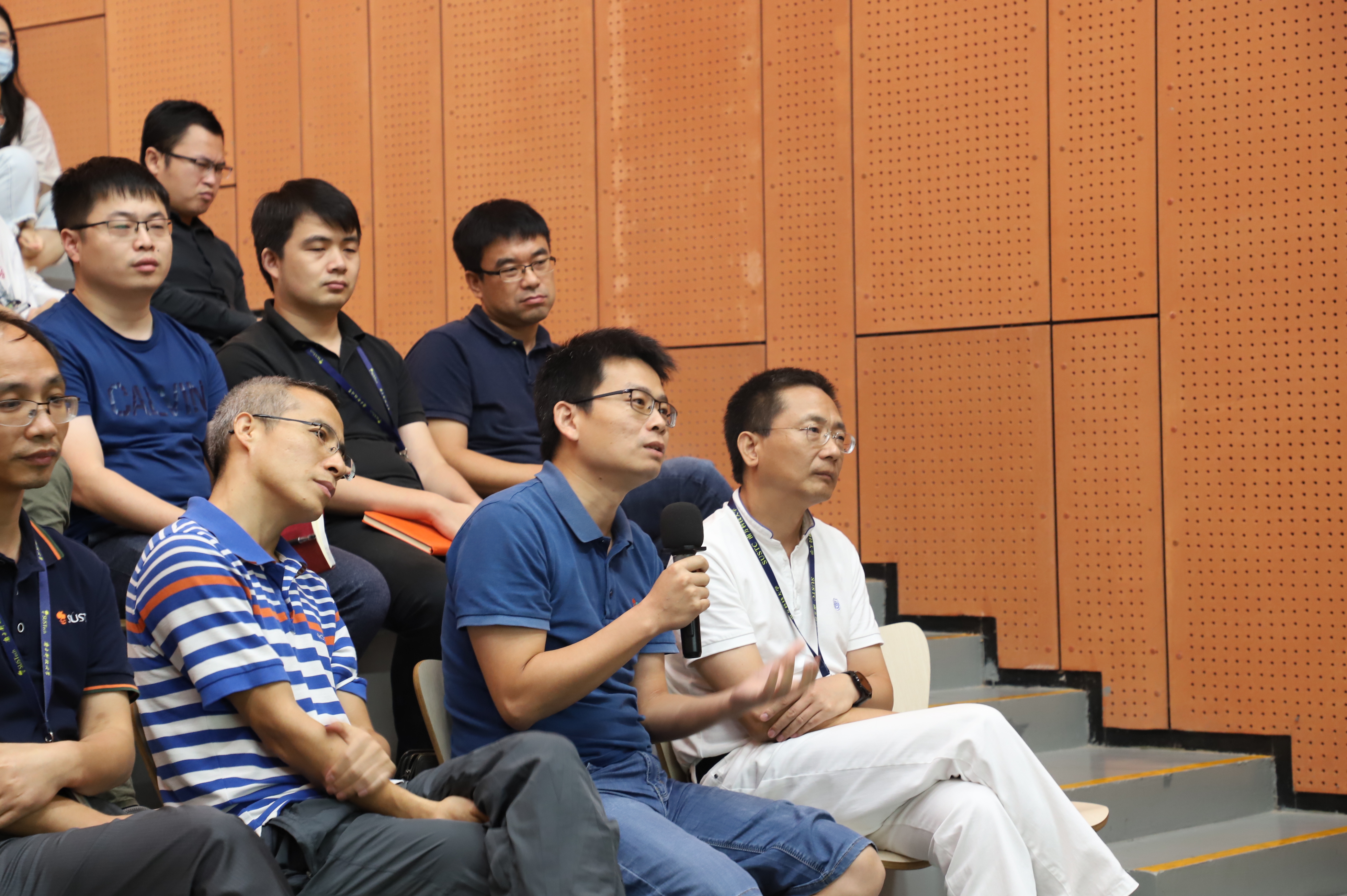
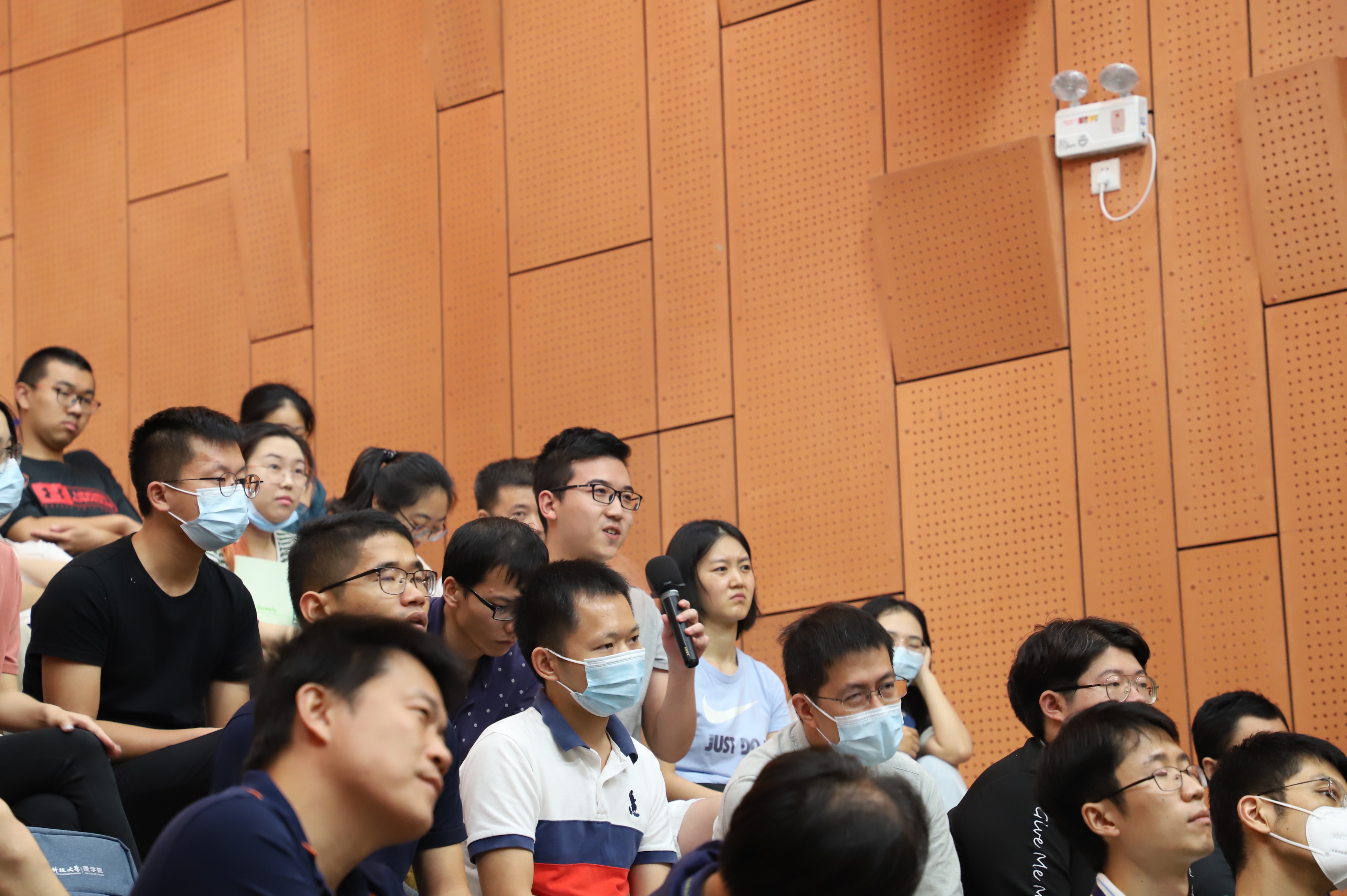
Interactions with Prof. CHEN
To conclude the lecture, Prof. Zhiping ZHENG handed an honorary certificate to Prof. Xing CHEN and had a group photo with all the presented faculty.
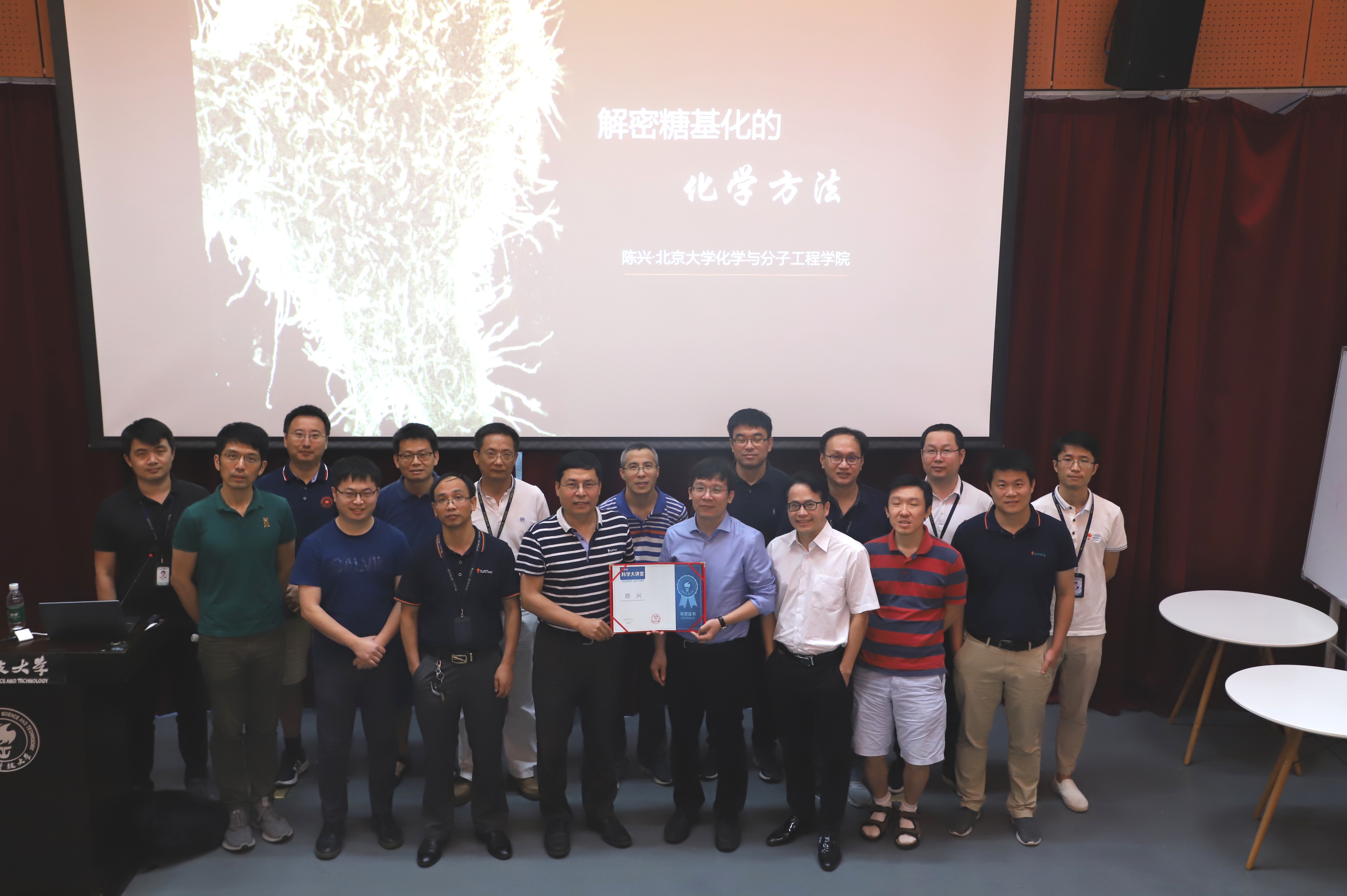
A Group Photo




